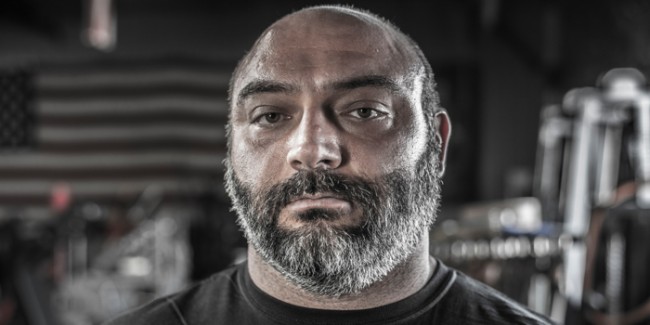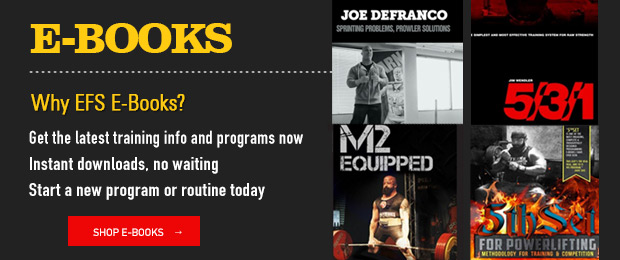
I know this goes against conjugate gospel, but there are times in life when true max effort work may not be your best option. If you’ve read some of my previous articles, like “A Case for Max Effort Work and How to Introduce It,” I can understand why you're getting confused or even pissed off. YES, grinding for a heavy-ass single carries many benefits that you can't get in other traditional methods of training, but you can't do it every week, all year long. Let's take a look at some examples of when maximal might not be optimal.
In-Season Sports Athletes
The scenario is tricky; you can actually argue both ways for true max effort work in-season. We’re going to talk about the times when it might not be optimal.
RECENT: Why I Bought From elitefts
Many times, as a strength coach, you are going to run across groups that are not highly motivated in the weight room. These groups should stay away from true max effort work for the obvious reason of risking injury. If you have a relatively unmotivated and unfocused group of athletes, doing highly neurologically demanding methods with heavy loads on them on top of practice and competition is probably not the best idea.
Sports that are very physically demanding and trauma-inducing, such as football, may not be your best sports to run this in-season, either. To me, this is specific to the group and population you have.
The reasons to stay away from it are pretty obvious. If your guys are going out and basically putting themselves through car accidents each week, I can see why you wouldn't use this method. If those guys also have a high training age, I would stay away from true max effort with them. With the groups that match this description, I would much rather use submaximal singles if you feel they need to do some heavy work.
What I would typically do with high trauma sports athletes that have a high training age is substitute dynamic or speed work into their max effort lane. The stimulus between speed work and accessory work will be enough for them to maintain and increase strength over the course of the season.
If you still feel they need some heavier stimulation, try doing a couple of work-up sets after their speed work. This may consist of five sets of two reps at 50 percent, then two reps at 65 percent, and two reps at 70 percent. Over the course of the next couple of weeks, you can continue to increase the work-up sets in a semi-linear fashion.
If you have a group of athletes that is young and not proficient at the movement in the weight room, true max effort work is not a good in-season match for them, either.
To recap, for in-season athletes, submaximal singles or even dynamic work can be substituted in the max effort lane to get great training results. I don't believe it's a good idea to do reps in this lane in-season.
One of the massive benefits to the max effort method is its low volume nature. For example, a typical max effort session is seven to eight total reps after you warm up with a bar. If you are in-season and start doing threes and fives for 3RMs and 5RMs, you lose that advantage!
You will also start making your athletes sore in-season. A little soreness in-season is perfectly fine, but keep in mind, the main objectives are practice and game performance! For everyone who thinks I just sounded soft, it's proven you don't have to get sore to get stronger. If we work up singles until they’re heavy without max effort or using submaximal weights with maximal intent into the bar, we can increase the athletes’ strength throughout the season.
Now that you’ve got it all figured out, here's another wrench in the plans... some of the high school teams I work with do true max effort work in-season. Keep in mind, high school kids are extremely adaptable and recoverable; you just have to do it right.
READ MORE: Selecting Appropriate Exercises for Youth Athletes
With the teams I have doing this, we will typically work up on a certain exercise to an RPE of eight to nine in the first week, and then, in the second week of that exercise, they try to beat the weight that they did on the first week. It’s true max effort work, just a little more gradual.
Powerlifters
If you are a powerlifter, you need to pick your spots and know when it is time to push hard. Three of the four major muscle tears I've gotten over the years happened because I was pushing hard when I didn't have to. They happened during times of the year when I didn't need to go balls out. I was watching other lifters on the Internet doing some cool shit, and in my head, I was like, “Fuck that guy! I can do that!” Unfortunately, we don't know where the edge is unless we step over it once in a while.
One thing I've noticed with some of the best lifters that are also injury-free is that they pick their spots. When it's time to push for meet and get strong, they do that! On the flip side, they know enough that if there is no meet coming up, they can push on a single to something that's heavy but not a terrible grinder, then move on to the supplementary and accessory movements and still continue to make progress... without kicking the shit out of themselves.
This is another guideline you may have to follow as you start to age a little bit. When I was in my mid-20s and early 30s, having my foot on the gas all year long didn't seem to bother me. I just had the ultimate total in my head every single time I went into the gym.
If there's one good piece of advice I wish someone would have given me, and hopefully, I would have listened, it would be, “Be patient.” I didn't understand that you didn't have to train like an absolute motherfucker every week, all year long.
Hopefully, this will clear up some variations we’ve put into place over the years with the max effort lane in ConjugateU!










